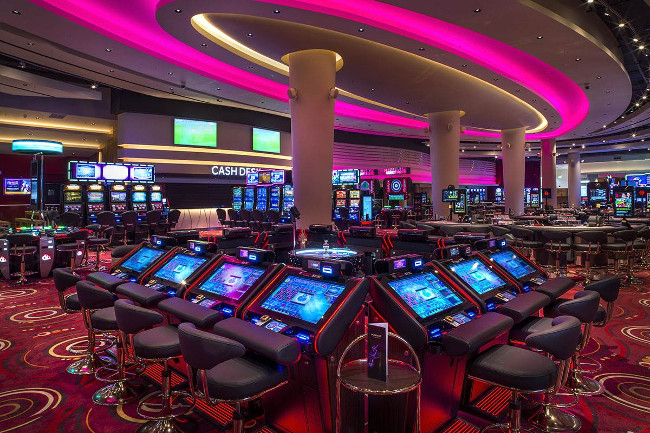
The sphere of gambling games has long fascinated players with its combination of excitement, strategy, and the excitement of chance. With tech advancements progresses and the gambling landscape changes, an exciting approach known as gamification has started to redefine the way we interact with these traditional activities. By incorporating gaming elements such as challenges, incentives, and progress tracking, gamification enhances player engagement and changes the traditional casino atmosphere into a more interactive and immersive space.
This approach in gambling entertainment not only attracts to experienced players but also attracts a fresh generation of participants who crave a more engaging adventure. With features that promote participation and build connection among participants, the gamified elements infuse new life into beloved classics like casino poker, blackjack, and slot machines. As we delve deeper into this phenomenon, we will investigate how this trend is redefining the casino experience, making it more accessible, entertaining, and rewarding for everyone participating.
Understanding Game Mechanics
Gamification denotes the implementation of game-like elements in real-world environments to enhance player engagement and interaction. In the realm of gaming, this idea has gathered significant attention, transforming classic gaming into a more dynamic and satisfying adventure. By integrating features such as scores, stages, and prizes, casinos can build an ecosystem that motivates players to participate more frequently and for longer periods.
At the center of gamification is the urge to tap into the intrinsic drives of players. Tải app ga179 Gaming experiences that utilize gamification methods are designed to not only delight but also to foster competition and success. Players are often drawn to the immediate responses and progress tracking that these elements provide. This not only keeps them engaged but also cultivates a notion of accomplishment as they attain goals and access fresh aspects.
Additionally, gamification can improve community interaction among players, cultivating a community atmosphere that enhances the pleasure of gaming experiences. Features such as leaderboards, team challenges, and collaborative tasks allow players to engage with others, share experiences, and compete in a friendly manner. This social aspect adds another layer to the gaming experience, allowing it to be more immersive and pleasurable for gamers.
Effect on Player Interaction
Game design methods in gambling games have greatly changed the way players connect with their favorite activities. By adding elements such as incentives, rankings, and achievement badges, gambling establishments create an atmosphere that encourages a more profound relationship between players and the experiences they prefer. This enhanced engagement contributes to extended gaming periods and boosted player commitment, as users strive to achieve new milestones or claim special incentives.
Furthermore, the social component of game-based casino games cannot be ignored. Numerous sites allow players to challenge against others or other gamers, which introduces a dimension of thrill and camaraderie. This rivalry drives engagement by appealing into gamers’ drive to compete, encouraging them to revisit for additional in order to improve their standings or showcase their accomplishments. As a result, the community engagement foster a feeling of community that encourages users returning.
Additionally, the prompt responses and validation provided by game elements serve to encourage users. Whether a notification of a recent milestone or the excitement of earning a bonus, these instant rewards play a vital role in maintaining attention. By regularly providing gamers for their actions, casino games become greater than a pastime; they develop into an interactive experience that captivates gamers and boosts their pleasure.
Trends in Casino Game Design
The entire landscape of casino game design is continuously evolving, driven by tech innovations and evolving player preferences. One important trend is the integration of immersive technologies, such as VR reality and AR reality, to enhance the gaming experience. Such technologies create a more engaging environment, enabling players to feel as though they are in a real casino, which can lead to longer play sessions and heightened player satisfaction.
Another trend is the integration of narrative elements into casino games. Game designers are focusing on storytelling to create a deeper connection between the player and the game. This narrative-driven approach not only makes the games more enjoyable but also motivates players to invest emotionally, which can enhance their complete experience. By blending traditional gaming mechanics with captivating stories, developers are drawing in a broader audience who may not have previously engaged with casino games.
Lastly, the emergence of multiplayer features is reshaping how players interact with casino games. Many games now feature social elements, such as broadcasting achievements or challenging with friends, to promote social interaction and engagement. This trend reflects a move towards a more interactive experience, where players can link with others, sharing their enthusiasm and challenges. As casinos adapt to these social dynamics, the experience of gaming becomes not just about solo play, but also about building connections among players.
